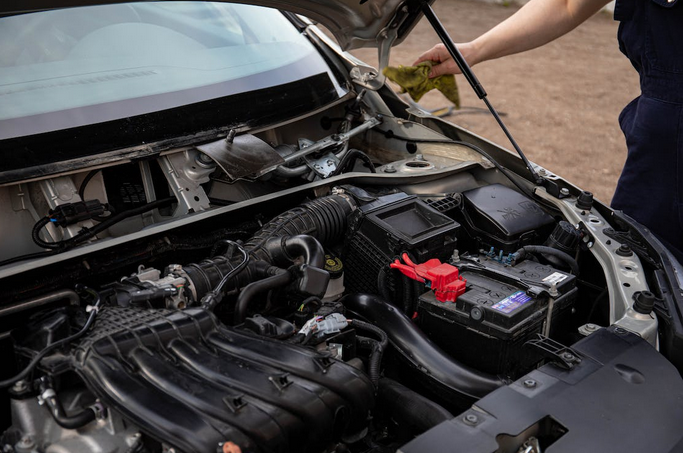Are you tired of being stranded on the side of the road with a dead car battery? We’ve all been there, and it’s frustrating and a waste of time and money. That’s why paying attention to the warning signs that your car battery might be on its last legs is crucial. In this blog post, we’ll explore some telltale indicators that your battery is giving up the ghost, so you can take action before it leaves you high and dry. Don’t let a dying battery ruin your day – keep reading to learn how to stay one step ahead.
Slow Engine Crank
A slow-cranking engine is one of the most common and noticeable signs of a dying car battery. When you turn the key in the ignition, the battery provides the electrical power needed to start the engine. The engine may crank more slowly if the battery is weak or low on charge. You may hear a sluggish cranking sound or notice a delay before the engine starts. If you experience this symptom, it’s essential to have your battery tested as soon as possible.
Dimming Headlights and Electrical Issues

A dying car battery may struggle to supply enough power to the vehicle’s electrical systems, causing headlights and interior lights to appear dimmer than usual. Additionally, you might notice issues with other electrical components, such as slow power windows, unresponsive power locks, or a malfunctioning infotainment system. These electrical problems can indicate that the battery is losing its ability to hold a charge effectively.
Warning Light on the Dashboard
Modern vehicles have a dashboard warning light, usually shaped like a battery or marked “ALT” or “GEN.” This warning light will illuminate if your car’s battery is struggling or not charging properly. Pay close attention to warning lights on your dashboard, and if you see the battery symbol or any other warning light, have your battery and charging system inspected promptly.
Unusual Smell or Corrosion Around the Battery
A failing car battery can emit an unusual odor, often described as a rotten egg smell. This odor is caused by hydrogen gas being released during the battery’s charging and discharging process. Additionally, inspect the battery terminals and connections regularly for signs of corrosion. Corrosion can hinder the flow of electricity and lead to battery issues.
Old Age of the Battery
Car batteries have a limited lifespan, typically three to five years, depending on usage and environmental conditions. If your battery is over three years old, it’s essential to be vigilant for signs of deterioration. Regularly check the battery’s age or consult your vehicle’s maintenance records to determine if it’s time for a replacement.
Need for Frequent Jump-Starts
If you need to jump-start your car frequently, it indicates that your battery no longer holds a sufficient charge. While jump-starting might get your vehicle running temporarily, it does not address the underlying issue with the battery. Continuously relying on jump-starts can stress other vehicle components and lead to further electrical problems.
Difficulty Starting in Cold Weather
Car batteries can experience reduced performance in cold weather conditions. If you notice that your car has trouble starting during colder months, it could be a sign that the battery is losing its capacity to deliver the necessary power in low temperatures. Extreme cold can cause the battery’s chemical reactions to slow down, affecting its ability to supply the required electrical current.
Visible Battery Damage

Inspect your car battery regularly for any signs of physical damage, such as cracks, leaks, or bulging. Visible damage can clearly indicate that the battery is failing and needs immediate attention. If you notice any abnormalities or visible damage, do not attempt to repair the battery yourself; instead, seek professional assistance.
Being aware of the signs of a dying car battery is essential for maintaining the reliability and performance of your vehicle. Regular maintenance and battery checks can help you identify potential issues early …
